Some time before the first dinosaurs, two supercontinents, Laurasia and Gondwana, collided, forcing molten rock out from the depths of the Earth. As eons passed, the liquid rock cooled and geological forces carved this rocky fault line into Pico Sacro, a strange conical peak that sits like a wizard’s hat near the northwestern corner of Spain.
Today, Pico Sacro is venerated as a holy site and rumored, in the local mythology, to be a portal to hell. But this magic mountain has also become valued in modern times for a very different reason: the quartz deposits that resulted from these geological processes are some of the purest on the planet. Today, it is a rich source of the silicon used to build computer chips. From this dusty ground, the mineral is plucked and transformed into an inscrutable black void of pure inorganic technology, something that an art director could have dreamed up to stand in for aliens or the mirror image of earthly nature.
Ed Conway, a columnist for the Times of London, catches up with this rock’s “epic odyssey” in his new book, Material World: The Six Raw Materials That Shape Modern Civilization.
In a warehouse just a few miles from the peak, he finds a dazzling pile of fist-size quartz chunks ready to be shoveled into a smoking coal-fired furnace running at 1,800 °C, where they are enveloped in a powerful electrical field. The process is not what he expected—more Lord of the Rings than Bay Area startup—but he relishes every near-mystical step that follows as quartz is coaxed into liquid silicon, drawn into crystals, and shipped to the cleanest rooms in the world.
Conway’s quest to understand how chips are made confronts the reality that no one person, “even those working on the supply chain itself,” can really explain the entire process. Conway soon discovers that even an industrial furnace can be a scene of sorcery and wonder, partly because of the electrical current that passes through the quartz and coal. “Even after more than a hundred years of production, there are still things people don’t understand about what’s happening in this reaction,” he is told by Håvard Moe, an executive at the Norwegian company Elkem, one of Europe’s biggest silicon producers.
Conway explains that the silicon “wafers” used to make the brains of our digital economy are up to 99.99999999% pure: “for every impure atom there are essentially 10 billion pure silicon atoms.” The silicon extracted from around Pico Sacro leaves Spain already almost 99% pure. After that, it is distilled in Germany and then sent to a plant outside Portland, Oregon, where it undergoes what is perhaps its most entrancing transformation. In the Czochralski or “CZ” process, a chamber is filled with argon gas and a rod is dipped repeatedly into molten refined silicon to grow a perfect crystal. It’s much like conjuring a stalactite at warp speed or “pulling candy floss onto a stick,” in Conway’s words. From this we get “one of the purest crystalline structures in the universe,” which can begin to be shaped into chips.
Material World is one of a spate of recent books that aim to reconnect readers with the physical reality that underpins the global economy. Conway’s mission is shared by Wasteland: The Secret World of Waste and the Urgent Search for a Cleaner Future, by Oliver Franklin-Wallis, and Cobalt Red: How the Blood of the Congo Powers Our Lives, by Siddharth Kara. Each one fills in dark secrets about the places, processes, and lived realities that make the economy tick.
Conway aims to disprove “perhaps the most dangerous of all the myths” that guide our lives today: “the idea that we humans are weaning ourselves off physical materials.” It is easy to convince ourselves that we now live in a dematerialized “ethereal world,” he says, ruled by digital startups, artificial intelligence, and financial services. Yet there is little evidence that we have decoupled our economy from its churning hunger for resources. “For every ton of fossil fuels,” he writes, “we exploit six tons of other materials—mostly sand and stone, but also metals, salts, and chemicals. Even as we citizens of the ethereal world pare back our consumption of fossil fuels, we have redoubled our consumption of everything else. But, somehow, we have deluded ourselves into believing precisely the opposite.”
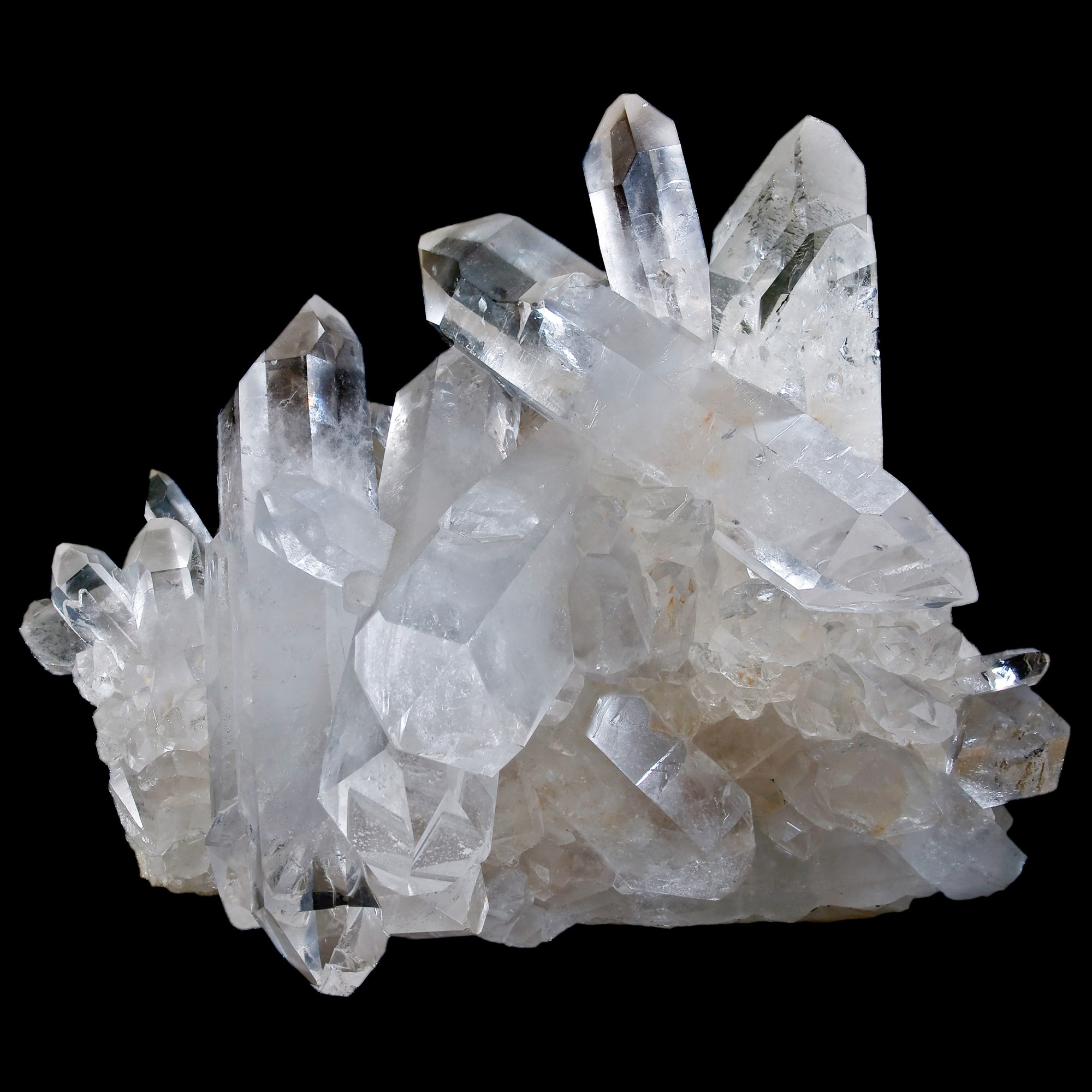
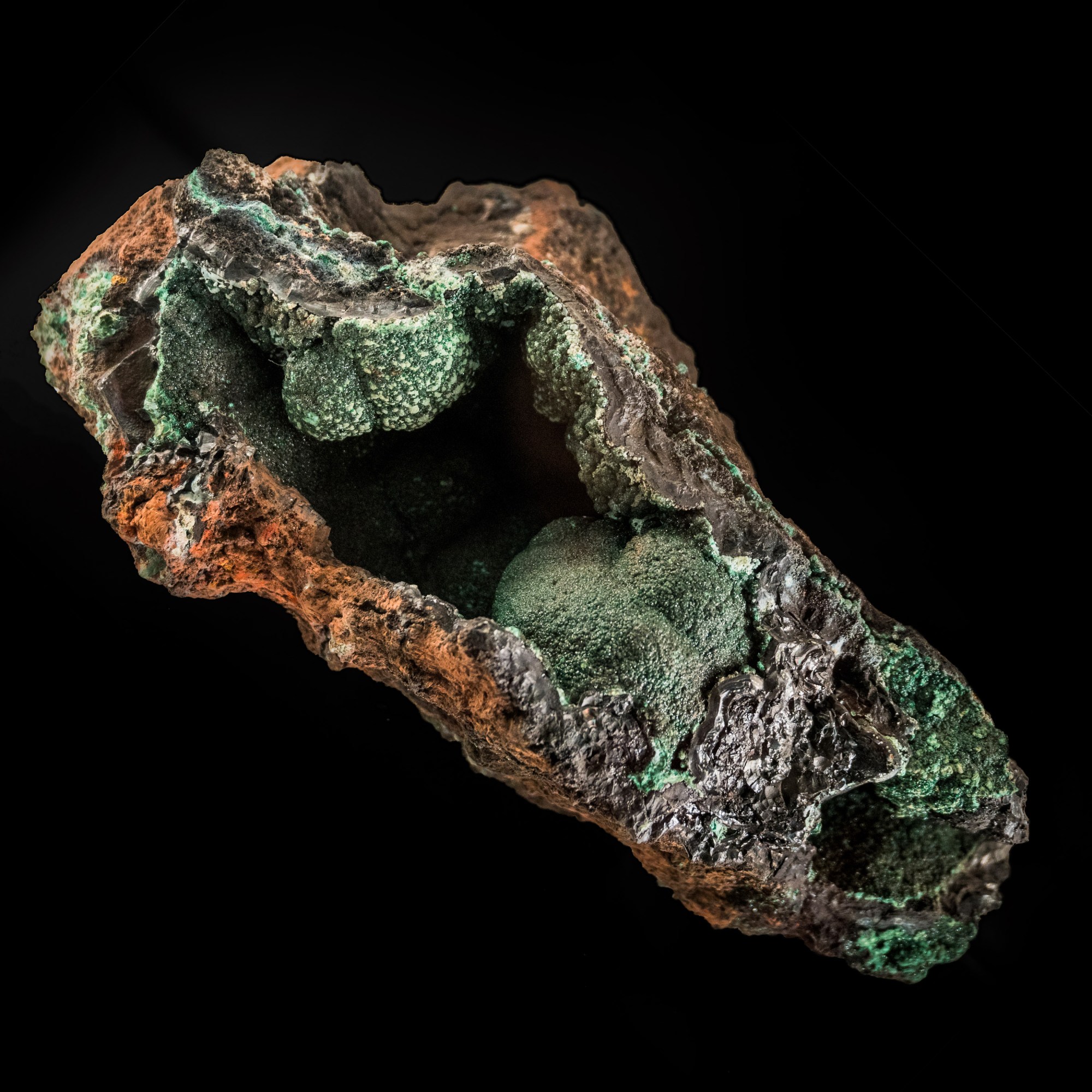
Conway delivers rich life stories of the resources without which our world would be unrecognizable, covering sand, salt, iron, copper, oil, and lithium. He buzzes with excitement at every stage, with a correspondent’s gift for quick-fire storytelling, revealing the world’s material supply chains in an avalanche of anecdote and trivia. The supply chain of silicon, he shows, is both otherworldly and incredibly fragile, encompassing massive, anonymous industrial giants as well as terrifyingly narrow bottlenecks. Nearly the entire global supply of specialized containers for the CZ dipping process, for example, is produced by two mines in the town of Spruce Pine, North Carolina. “What if something happened to those mines? What if, say, the single road that winds down from them to the rest of the world was destroyed in a landslide?” asks Conway. “Short answer: it would not be pretty. ‘Here’s something scary,’ says one veteran of the sector. ‘If you flew over the two mines in Spruce Pine with a crop duster loaded with a very particular powder, you could end the world’s production of semiconductors and solar panels within six months.’” (Conway declines to print the name of the substance.)
Yet after such an impressive journey through deep time and the world economy, how long will any electronic gadget last? The useful life of our electronics and many other products is likely to be a short blip before they return to the earth. As Oliver Franklin-Wallis writes in Wasteland, electronic waste is one stubborn part of the 2 billion tons of solid waste we produce globally each year, with the average American discarding more than four pounds of trash each day.
Wasteland begins with a trip to Ghazipur, India, the “largest of three mega-landfills that ring Delhi.” There, amid an aromatic fug of sticky-sweet vapors, Franklin-Wallis stomps through a swamp-like morass of trash, following his guide, a local waste picker named Anwar, who helps him recognize solid stepping-stones of trash so that he may safely navigate above the perilous system of subterranean rivers that rush somewhere unseen below his feet. Like the hidden icy currents that carve through glaciers, these rivers make the trash mountain prone to cleaving and crumbling, leading to around 100 deaths a year. “Over time, [Anwar] explains, you learn to read the waste the way sailors can read a river’s current; he can intuit what is likely to be solid, what isn’t. But collapses are unpredictable,” Franklin-Wallis writes. For all its aura of decay, this is also a living landscape: there are tomato plants that grow from the refuse. Waste pickers eat the fruits off the vine.
Wasteland is best when excavating the stories buried in the dump. In 1973, academics at the University of Arizona, led by the archaeologist William Rathje, turned the study of landfills into a science, labeling themselves the “garbologists.” “Trash, Rathje found, could tell you more about a neighborhood—what people eat, what their favorite brands are—than cutting-edge consumer research, and predict the population more accurately than a census,” Franklin-Wallis writes. “Unlike people,” he adds, “garbage doesn’t lie.”
Wasteland leaves a lasting impression of the trash-worlds that we make. Most horrifying of all, the contents of landfills don’t decompose the way we expect. By taking geological cores from landfills, Rathje found that even decades later, our waste remains a morbid museum: “onion parings were onion parings, carrot tops were carrot tops. Grass clippings that might have been thrown away the day before yesterday spilled from bulky black lawn and leaf bags, still tied with twisted wire.”
Simply shifting to “sustainable” or “cleaner” technologies doesn’t eliminate the industrial fallout from our consumption.
Franklin-Wallis’s histories help tell us where we as a civilization began to go wrong. In ancient Rome, waste from public latrines was washed away with wastewater from the city’s fountains and bathhouses, requiring a “complex underground sewer system crowned by the Cloaca Maxima, a sewer so great that it had its own goddess, Cloacina.” But by the Victorian age, the mostly circular economy of waste was coming to an end. The grim but eco-friendly job of turning human effluent into farm fertilizer (so-called “nightsoil”) was made obsolete by the adoption of the home flushing toilet, which pumped effluent out into rivers, often killing them. Karl Marx identified this as the beginning of a “metabolic rift” that—later turbocharged by the development of disposable plastics—turned a sustainable cycle of waste reuse into a conveyor between city and dump.
This meditation on trash can be fascinating, but the book never quite lands on a big idea to draw its story forward. While trash piles can be places of discovery, our propensity to make waste is no revelation; it’s an ever-present nightmare. Many readers will arrive in search of answers that Wasteland isn’t offering. Its recommendations are ultimately modest: the author resolves to buy less, learns to sew, appreciates the Japanese art of kintsugi (mending pottery with precious metals to highlight the act of repair). A handful of other lifestyle decisions follow.
As Franklin-Wallis is quick to acknowledge, a journey through our own waste can feel hopeless and overwhelming. What we’re lacking are viable ways to steer our societies from the incredibly resource-intensive paths they are on. This thought, taken up by designers and activists driving the Green New Deal, is aiming to turn our attention away from dwelling on our personal “footprint”—a murky idea that Franklin-Wallis traces to industry groups lobbying to deflect blame from themselves.
Reframing both waste and supply chains as matters that are political and international, rather than personal, could guide us away from guilt and move us toward solutions. Instead of looking at production and waste as separate problems, we can think of them as two aspects of one great challenge: How do we build homes, design transport systems, develop technology, and feed the world’s billions without creating factory waste upstream or trash downstream?
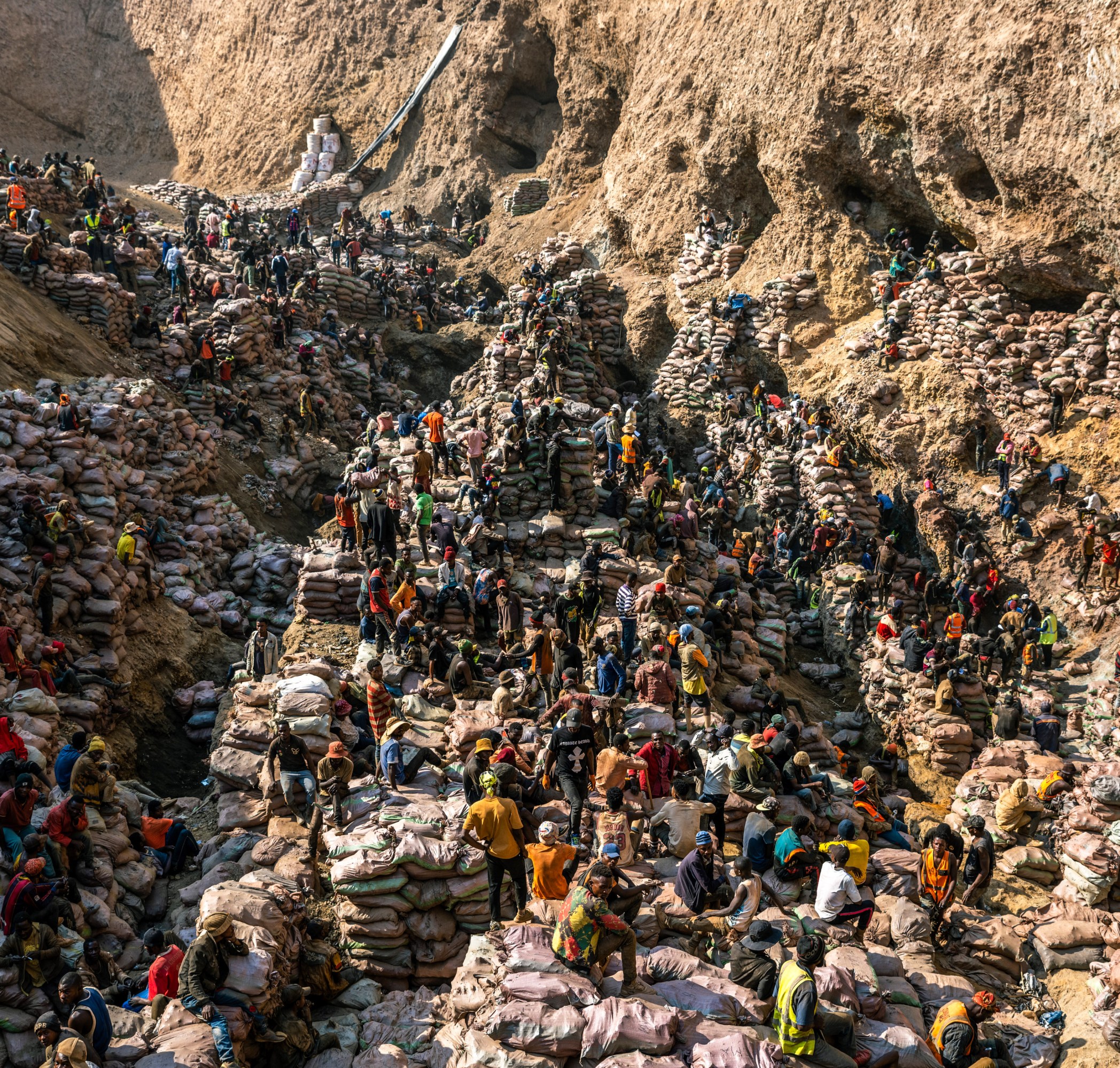
Republic of Congo.
Simply shifting to “sustainable” or “cleaner” technologies doesn’t eliminate the industrial fallout from our consumption, as Siddharth Kara reveals in Cobalt Red. Cobalt is a part of just about every rechargeable device—it is used to make the positively charged end of lithium batteries, for example, and each electric vehicle requires 10 kilograms (22 pounds) of cobalt, 1,000 times the quantity in a smartphone.
Half the world’s reserves of the element are found in Katanga, in the south of the Democratic Republic of Congo (DRC), which puts this resource-rich region at the center of the global energy transition. In Kara’s telling, the cobalt rush is another chapter in an age-old story of exploitation. In the last two centuries, the DRC has been a center not only for the bloody trade in enslaved humans but also for the colonial extraction of rubber, copper, nickel, diamonds, palm oil, and much more. Barely a modern catastrophe has unfolded without resources stolen from this soil: copper from the DRC made the bullets for two world wars; uranium made the bombs dropped on Hiroshima and Nagasaki; vast quantities of tin, zinc, silver, and nickel fueled Western industrialization and global environmental crises. In return, the DRC’s 100 million people have been left with little by way of lasting benefits. The country still languishes at the foot of the United Nations development index and now faces disproportionate impacts from climate change.
In Cobalt Red, Congo’s history plays out in vignettes of barbarous theft perpetrated by powerful Western-backed elites. Kara, an author and activist on modern slavery, structures the book as a journey, drawing frequent parallels to Joseph Conrad’s 1899 Heart of Darkness, with the city of Kolwezi substituting for Kurtz’s ivory-trading station, the destination in the novella. Kolwezi is the center of Katanga’s cobalt trade. It is “the new heart of darkness, a tormented heir to those Congolese atrocities that came before—colonization, wars, and generations of slavery,” Kara writes. The book provides a speedy summary of the nation’s history starting with the colonial vampirism of the Belgian king Leopold’s “Free State,” described by Conrad as the “vilest scramble for loot that ever disfigured the history of human conscience.” The king’s private colony forced its subjects to collect rubber under a system of quotas enforced by systematic execution and disfigurement; forced labor continued well into the 20th century in palm oil plantations that supplied the multinational Unilever company.
These three books offer to connect the reader to the feel and smell and rasping reality of a world where materials still matter.
Kara’s multiyear investigation finds the patterns of the past repeating themselves in today’s green boom. “As of 2022, there is no such thing as a clean supply chain of cobalt from the Congo,” he writes. “All cobalt sourced from the DRC is tainted by various degrees of abuse, including slavery, child labor, forced labor, debt bondage, human trafficking, hazardous and toxic working conditions, pathetic wages, injury and death, and incalculable environmental harm.” Step by step, Kara’s narrative moves from the fringes of Katanga’s mining region toward Kolwezi, documenting the free flow of minerals between two parallel systems supposedly divided by a firewall: the formal industrial system, under the auspices of mining giants that are signatories to sustainability pacts and human rights conventions, and the “artisanal” one, in which miners with no formal employer toil with shovels and sieves to produce a few sacks of cobalt ore a day.
We learn of the system of creuseurs and négociants—diggers and traders—who move the ore from denuded fields into the formal supply chain, revealing that an unknown percentage of cobalt sold as ethical comes from unregulated toil. If Material World tells a neat story of capitalism’s invisible hand, the force that whisks resources around the planet, Cobalt Red documents a more brutal and opaque model of extraction. In Kara’s telling, the artisanal system is grueling and inefficient, involving countless middlemen between diggers and refineries who serve no purpose except to launder ore too low-grade for industrial miners and obscure its origins (while skimming off most of the earnings).
Everywhere Kara finds artisanal mining, he finds children, including girls, some with babies on backs, who huddle together to guard against the threat of sexual assault. There is no shortage of haunting stories from the frontlines. Cobalt ore binds with nickel, lead, arsenic, and uranium, and exposure to this metal mixture raises the risk of breast, kidney, and lung cancers. Lead poisoning leads to neurological damage, reduced fertility, and seizures. Everywhere he sees rashes on the skin and respiratory ailments including “hard metal lung disease,” caused by chronic and potentially fatal inhalation of cobalt dust.
One woman, who works crushing 12-hour days just to fill one sack that she can trade for the equivalent of about 80 cents, tells how her husband recently died from respiratory illness, and the two times she had conceived both resulted in miscarriage. “I thank God for taking my babies,” she says. “Here it is better not to be born.” The book’s handful of genuinely devastating moments arrive like this—from the insights of Congolese miners, who are too rarely given the chance to speak.
All of which leaves you to question Kara’s strange decision to mold the narrative around the 125-year-old Heart of Darkness. It has been half a century since the Nigerian novelist Chinua Achebe condemned Conrad’s novella as a “deplorable book” that dehumanized its subjects even as it aimed to inspire sympathy for them. Yet Kara doubles down by mirroring Conrad’s storytelling device and style, from the first sentence (featuring “wild and wide-eyed” soldiers wielding weapons). When Kara describes how the “filth-caked children of the Katanga region scrounge at the earth for cobalt,” who is the object of disgust: the forces of exploitation or the miners and their families, often reduced to abstract figures of suffering?
Following Conrad, Cobalt Red becomes, essentially, a story of morality—an “unholy tale” about the “malevolent force” of capital—and reaches a similarly moralistic conclusion: that we must all begin to treat artisanal miners “with equal humanity as any other employee.” If this seems like an airy response after the hard work of detailing the intricacies of cobalt’s broken supply chain, it is doubly so after Kara documents both the past waves of injustice and the moral crusades that have brought the Free State and old colonial structures to an end. Such calls for humanistic fairness toward Congo have echoed down the ages.
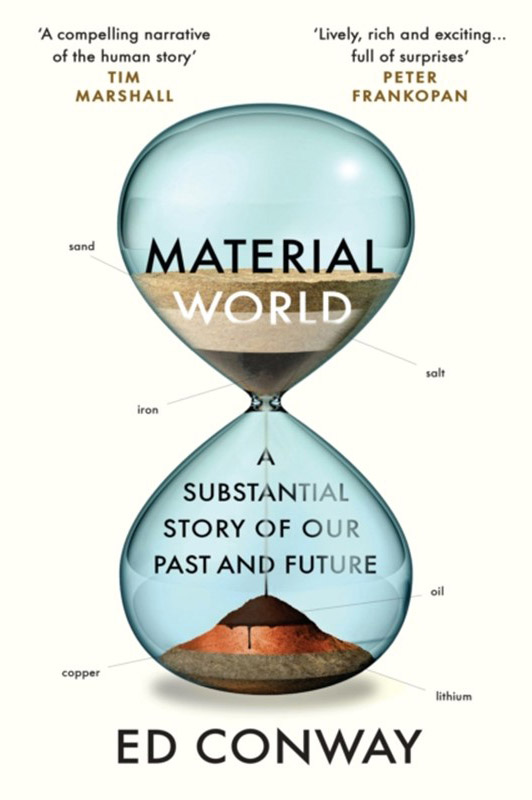
Shape Modern Civilization
Ed Conway
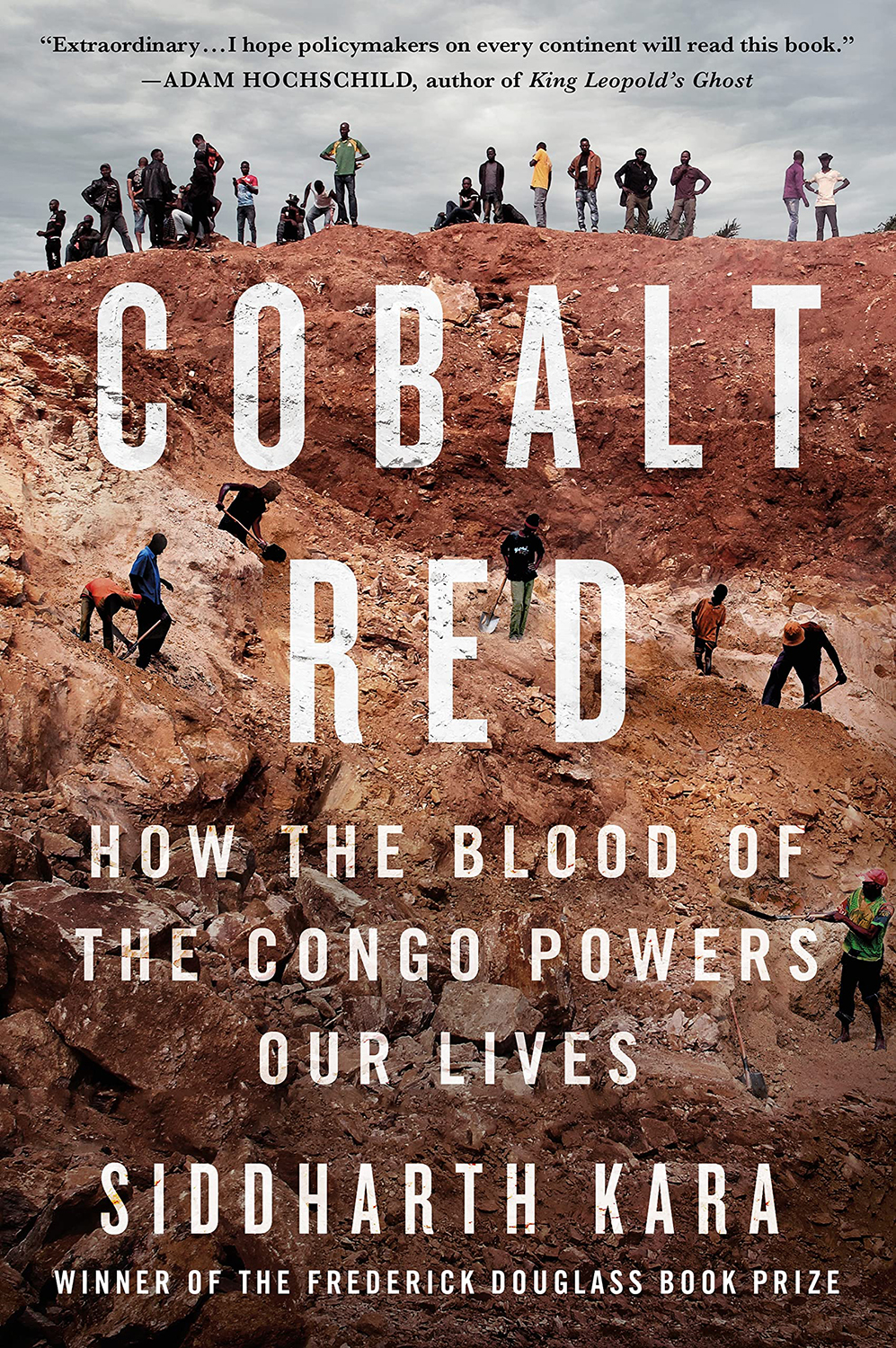
Siddharth Kara
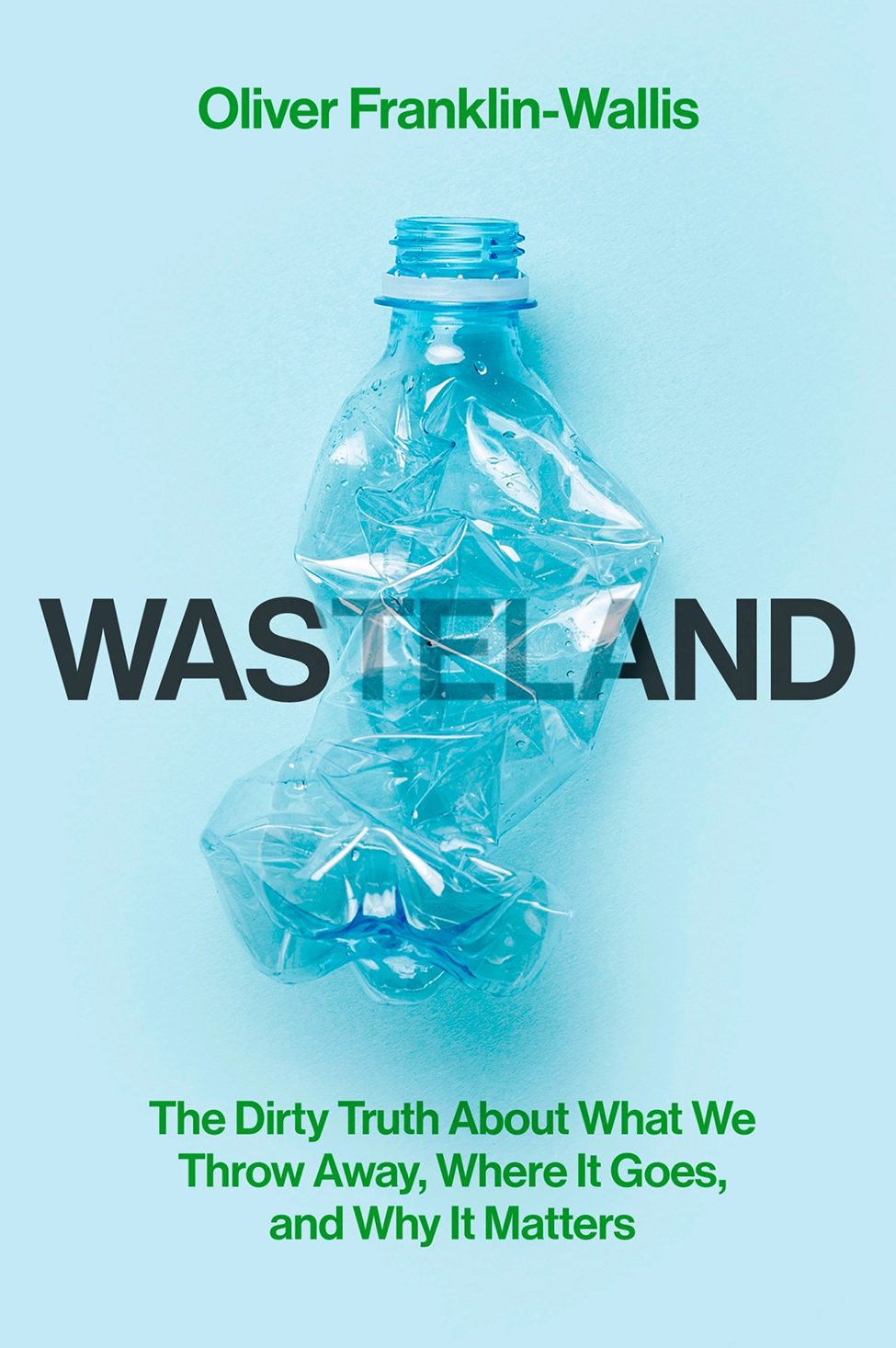
Oliver Franklin-Wallis
All three books offer to connect the reader to the feel and smell and rasping reality of a world where materials still matter. But in Kara’s case, such a strong focus on documenting firsthand experience edges out a deeper understanding. There is little space given to the numerous scholars from across the African continent who have made sense of how politics, commerce, and armed groups together rule the DRC’s deadly mines. The Cameroonian historian Achille Mbembe has described sites like Katanga not only as places where Western-style rule of law is absent but as “death-worlds” constructed and maintained by rich actors to extract resources at low cost. More than simply making sense of the current crisis, these thinkers address the big questions that Kara asks but struggles to answer: Why do the resources and actors change but exploitation remains? How does this pattern end?
Matthew Ponsford is a freelance reporter based in London.
#Quartz #cobalt #waste #leave



